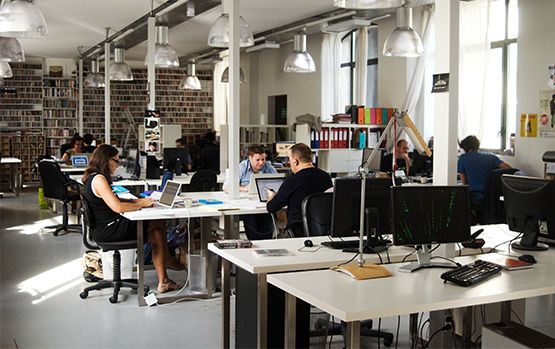Informational portal
1. Profile of an average enterprise
There are dozens of different information portals in Estonia (they are also called: portal, website, online store, communication center, Internet environment, Internet page), the main purpose of which is to offer information to portal users and sell advertisements and / or their products / services . As for the number of portals, there are no such statistics, however, for example, according to www.neti.ee, there are 16 car portals in Estonia.
Information portals can be divided into several categories, based on the various commercial logic of portals, the topic and purpose under consideration.
Portals on various topics (for example: portals for gardening, real estate, religion).
The objectives of the portal owners may differ:
a) Portals operated by the state, and the purpose of which is to disseminate information (for example: www.riik.ee).
b) portals that aim to make the owner profit (for example: www.auto24.ee).
The content building of the information portal and commercial logic can differ:
a) Users complete the information portal (add information important to other users) every day in their free time and for free. Money comes mainly from the sale of advertising (eg: www.rate.ee)
b) Users replenish the information portal themselves (they add information that is important to other users) every day in their free time, but they pay the portal owner for this. The money comes from the sale of advertising and from user payments (for example: www.auto24.ee).
c) The owners / employees of the portal mainly update / supplement the content of the information portal (news, articles, information). The money comes mainly from the sale of advertising. For example: www.epl.ee
d) The owners / employees of the portal mainly update / supplement the content of the information portal (news, articles, products / services). The money comes mainly from the sale of its products / services. For example: www.rmp.ee
The success of information portals can usually be measured in two ways:
How popular is the information portal among its users / readers;
How much advertising an information portal can sell.
According to the data for 2006, the Emor market research companies are www.neti.ee with 600,000, www.delfi.ee with 400,000, www.rate.ee with 330,000 and www.hot.ee with 250,000 visitors per week.
In the context of Estonia, the websites of state daily newspapers can be considered large information portals, all of them have over a hundred thousand visitors per week. The most visited are www.postimees.ee, quite a bit inferior to it www.sloleht.ee and in third place is www.epl.ee. Portals www.auto24.ee and www.ilm.ee also collect up to one hundred thousand visitors per week.
In the context of Estonia, medium-sized information portals can be considered sites that are visited by about 20,000–80,000 people per week (eg: www.cv.ee, www.u-pop.ee, www.osta.ee). Sites with less than 20,000 visitors per week can be called small portals.
The owners of medium and small portals are mainly limited partnerships, in some cases, joint-stock companies. Some beginner portals are owned by individuals. For owners of small portals, this is either one “project” among many, or a hobby. The main activities of the owners of large and popular information portals are not always the above sites.
Amount of workers
The number of employees in information portals is relatively small. In small portals, the owner of the company works with 1-2 employees. Quite often, work on the development of an information portal is carried out in their spare time and part-time work.
The average information portals employ an average of 3-6 people. The number of employees depends on the technical construction of the portal, commercial logic and the order of development.
Turnover and sales coverage
The monthly turnover of well-functioning large information portals is up to 300,000-500,000 crowns. The monthly turnover of informational portals of average size is usually in the range of 50,000–100,000 kroons, the turnover of small informational portals is 5,000–25,000 kroons per month.
Coverage of sales of information portals depends on the size of the portal and the business concept. If the costs associated with employees are not included in direct costs, then the average sales coverage (turnover minus costs associated with the occurrence of turnover — electricity, virtual server, domain fee, software rental) is 60-80%. If the information portal sells products (online store), then sales coverage is 5-20%.
Cost structure
Direct costs are electricity, Internet, and data acquisition costs. In addition, the entrepreneur must take into account the various costs associated with the activity: server rental, domain fees, labor costs (maintenance and updating of the information portal, advertising sales), office rent, accountant services, software rental and advertising costs
2. Estimated commissioning costs.
The costs associated with the commissioning of an information portal largely depend on the goals of the entrepreneur, skills and business concepts. The following is a realistic need for start-up capital based on various scenarios. The size of the investment does not include turnover tax, and price levels are estimated based on the position of entrepreneurs in this area.
In principle, there are three different scenarios:
a) The entrepreneur has the necessary skills in the field of information technology and aims to create an information portal, spending as little money as possible. During the first months, the investment will be up to 30,000 kroons, and they will be distributed as follows:
· Software: write it yourself, ask a friend, or find free software on the Internet.
· Information [1]: will write itself or partially acquire as a service (investment: up to 25 000 kroons).
· Internet: Uses an existing Internet connection at home / at work or with a friend.
· Server: uses its own server or a server of a friend, or rents space in a virtual server (investment: 300 CZK per month).
· Office: not needed or using the premises at home / at work / from a friend.
· Bookkeeping: deals with itself or buys services (investment: 500 CZK per month).
b) The entrepreneur possesses the necessary skills in the field of information technology and aims to create a good information portal, spending reasonable means. The volume of investments in the first months will be up to 170,000 kroons and they will be distributed as follows:
· Software: buys a basic solution and somewhat complements it with the help of professionals / friends (investment: basic solution up to 50,000 kroons, where development costs are added up to 10,000 kroons).
· Information: writes together with the team and buys as a service (investment: up to 100,000 kroons).
· Internet: buys with the virtual server service.
· Server: rents space in a virtual server (investment: up to 2,000 kroons per month).
· Office: uses the premises at home / at work / from a friend, rents if necessary (investment: up to 2 500 EEK per month)
· Accounting: engages itself or buys services (investment: 500 CZK per month)
c) The entrepreneur does not have the necessary skills in the field of information technology, but aims to create a very good information portal that would make a profit as soon as possible after launch. The volume of investments in the first months will amount to 1 400 000 kroons and they will be distributed as follows:
· Software: buys a complete solution from professionals (investment: up to 1,000,000 crowns).
· Information: buys as a service or hires workers for the main place of work (investment: up to 250,000 kroons).
· Internet: buys with the virtual server service.
· Server: rents space in a virtual server (investment: up to 10,000 CZK per month) or purchases the server itself (investment: 100,000 CZK).
· Office: rents premises (investment: EEK 5000 per month).
· Bookkeeping: buys services (investment: EEK 5,000 per month).
Recruitment and training
Finding suitable employees may not be easy, because in the field of information technology, the salary level of employees is noticeably higher than the average for Estonia, and there are not enough skilled workers. Owners of new information portals often have the necessary knowledge themselves, and in the course of their work pass them on to their employees. In small firms, formal training of employees is usually not conducted; studies take place in the course of work. Many employees are friends and acquaintances.
Advertising
Many small portals advertise very little. The main advertising channel is the Internet, where, for example, two different information portals advertise each other (affiliate transaction). The advantage of this method is low cost, and the problem is low efficiency and too small a target group. It is often hoped that the information portal advertises itself. There is a rule that small information portals want to conclude partnership deals with larger and more popular information portals. Affiliate deals are also used by large portals, but in this case they agree on the specific price of advertising, based on how many times the advertisement is displayed on the screen and how many times the users click on it with the mouse. During the partnership deals are provided and great benefits, reaching 50% of the regular price.
Small information portals that could not prove their business concept should one day make themselves advertising in other media besides the Internet. The main goal is to inform the general public about the portal in order to thereby gain new users and sell more advertising themselves. Depending on the specialization of the information portal, both national daily newspapers, radio and print media are used. For costing, it is desirable to examine the price of advertising in various media channels and find the most effective of them. The average minimum budget per month is about 15,000 kroons.
3. Supporting Organizations
There are no supporting organizations.
4. Requirements, permits for activities, licenses, health protection arising from legislation
To open an information portal in the name of the company’s business association, a domain must be registered. If you wish to use a domain with the ending “.ee”, then the application must be submitted to the Estonian Education and Science Data Network at www.eenet.ee. Each business association can register one .ee domain and this should not be a name that violates public interests or a name that has national significance. Additional information is available on the website.
If an entrepreneur wishes to register a domain with international endings (com, eu, fi, etc.), this must be done through any web hosting company (for example, www.zone.ee). If an entrepreneur wants to create a portal of pornographic content, then you should first consult with the web hosting company regarding possible restrictions and rules.
Under the Law on Trading Activities, an entrepreneur selling services must register with the Register of Economic Activities.
5. The most suitable form of entrepreneurship
Small information portals operate mainly as limited partnerships (85%). Some owners of information portals are private entrepreneurs, non-profit associations or individuals. Owners of large and popular information portals often act as joint-stock companies.
6. Insurance activities
As for the information portal, it is important to create a security system that would always ensure the availability of a backup option.
The information portal should be secure for its users, confidentiality of data should be guaranteed.
The information portal as a whole must be protected from hacker attacks.
Users and customers should always be provided with access to the information portal.
The information portal server must be protected from physical damage.
Electrical and Internet connections should have spare options.
Backup copies should be taken daily from the data of the information portal.
Activities can be significantly insured by buying / renting the appropriate software. If you use the services of a solid web hosting company, then this should be the insurance against most of the above risks. Obviously, this will entail certain additional costs.
You can weigh and the possibility of insuring physical property, if the entrepreneur uses his personal servers and computers.




